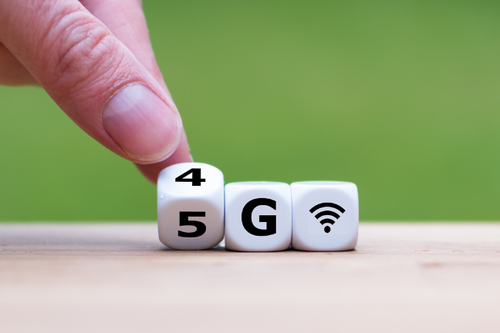
5G was developed in an effort to better support a vast array of internet-connected devices and meet the demand for faster speeds.
Soumya Sen, an associate professor in the Carlson School of Management, offers insight into what 5G is, how it works and the challenges in implementing the technology.
Q: What is 5G?
Prof. Sen: 5G stands for the fifth generation of mobile communication technology. Each generation of mobile technology gave us more functionalities and higher data speeds — 1G brought us the cell phone for voice calls, 2G gave us text messaging, 3G allowed us access the web, 4G supported multi-media rich content, and 5G will provide 10 times more data speed to support growing demand for video streaming, Internet of Things, virtual reality, cloud gaming, telemedicine and autonomous vehicles.
Q: How does 5G work?
Prof. Sen: All wireless devices use electromagnetic waves of specific frequencies to communicate. However, as more electronic devices join the network, speeds are slowing. 5G technology helps overcome this by enabling us to use a set of frequencies, called millimeter waves, that could not be used before in cellular networks. The challenge is that walls and trees easily absorb these waves. One way to get around this is to use a higher density of smaller cell towers that work together to provide connectivity instead of the large cell towers used by 3G or 4G technologies.
Q: Will all consumers have access to 5G?
Prof. Sen: Like 3G and 4G before it, 5G will reach different consumers at different times depending on their geographic location. Typically, new wireless technologies are rolled out in larger cities before finding their way to less densely populated areas.
Q: What are the potential benefits to consumers? The potential costs?
Prof. Sen: With 5G, consumers will be able to enjoy faster data speeds and support the growth of demand from internet-enabled devices. Initially, 5G will cost more than existing 4G data plans, as network operators will try to recover technology investment and expansion costs from early adopters. 5G may also be provided as a premium service, as opposed to a routine infrastructure upgrade from 4G.
Q: What are the challenges for companies, both wireless companies and phone makers, in the transition to 5G?
Prof. Sen: Wireless network companies will face the challenge of making large upfront investments in rolling out new 5G hardware infrastructure and acquiring rights to use millimeter wave spectrum, both of which will be expensive. Additionally, the limited range of the 5G millimeter wave technology also requires high density deployment of cell towers. They’ll also have to address concerns about the security of this infrastructure. Similarly, smartphone makers will have to invest in better antenna technology for 5G networks, while keeping the device prices sufficiently low for price-sensitive consumers.
Soumya Sen is an associate professor of Information & Decision Sciences at the Carlson School of Management at the University of Minnesota. His expertise is in internet technologies, data communications, electronic commerce, cloud technology, network security and broadband data pricing.
About “Talking...with U of M”
“Talking...with U of M” is a resource whereby University of Minnesota faculty answer questions on current and other topics of general interest. Feel free to republish this content. If you would like to schedule an interview with the faculty member or have topics you’d like the University of Minnesota to explore for future “Talking...with U of M,” please contact University Public Relations at [email protected].
- Categories:
- Science and Technology





